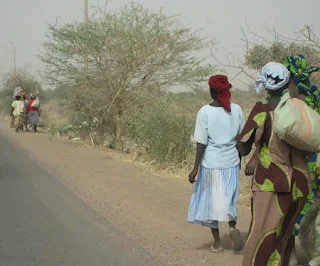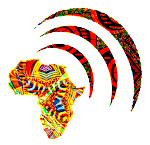Largest Ethnic Groups Of Chad Africa
Facts and statistics about the largest Ethnic Groups of Chad in Africa as of 2017. Chad is the largest of Africa's 16 landlocked countries with a population of 12 million people. With a country that size, there are many ethnic groups in the world's 22nd largest country of Chad.
The population of Chad Ethnic Groups are spread throughout the African country by climate and physical geography; the highest density of Chad's Ethnic Groups is found in the southwest, especially around Lake Chad. Lake Chad is the principal life source of the Sahel region. However, the dry Saharan region to the north in Chad is the least densely populated.
The five largest ethnic groups in Chad Africa in order are:
Sara
Bornu
Arab
Maba
Gorane
About Chad's Five Largest Ethnic Groups
Chad Sara ethnic group forms the largest percentage of the population in the central parts of the Chari and Logone river basins. Chad's Sara ethnic group practices polygamy, the ancient and current day custom of having more than one wife at the same time. The most typical forms of polygamy in Chad is polygyny, in which women share a husband.
Bornu was the historical kingdom in northeastern Nigeria and Chad. Bornu was originally the southernmost province of the Kanem Empire, an ancient kingdom that reached its peak in the 12th and 13th centuries.
The Baggāra are a grouping of Arab ethnic groups inhabiting the portion of Africa's Sahel mainly between Lake Chad and southern Kordofan.
Maba people are a minority ethnic group found primarily in the mountainous Ouaddaï region of eastern Chad, with some across its border with Sudan and Central African Republic.
Daza also known as Dazaga is a Nilo-Saharan language spoken by the Daza people inhabiting northern Chad. The Daza are also known as the Gorane in Chad.
Chad Brief History
A gradual process of introducing Islam into Chad took place in the 16th and 17th centuries during the kingdoms of the Bagirmi and Ouaddai. In the 1880s, Chad was conquered by the Sudanese warlord Rabih al-Zubair. Chad was first defined as a national territory in 1910, as one of the four making up French Equatorial Africa. Chad was a part of France's African assets until 1960.
Chad suffered three decades of civil warfare, before a shaky balance was restored in 1990. In 1998, an ongoing rebellion in northern Chad, until the government eventually drafted a democratic constitution and held presidential elections in 1996 and 2001. In June 2005 fighting with Sudan began while President of Chad Idriss Deby held a referendum successfully removing constitutional term limits and won another controversial election in 2006.
Deby in 2011 was re-elected to his fourth term. N'Djamena, the capital of Chad experienced combat from Sudan in 2007- 2008, but fighting is at a standstill in part due to Chad and Sudan January 2010 agreement to prevent other armed groups from using any land in their counties to fight against the other. The agreement also states that Chad and Sudan will establish policies and procedures to jointly monitor and patrol their common border.
 |
| Families walking home from market in Chad's capital city |
In Africa, Chad's Sara ethnic group practices polygamy?
Largest Ethnic Groups Of Chad AfricaThe population of Chad Ethnic Groups are spread throughout the African country by climate and physical geography; the highest density of Chad's Ethnic Groups is found in the southwest, especially around Lake Chad. Lake Chad is the principal life source of the Sahel region. However, the dry Saharan region to the north in Chad is the least densely populated.
The five largest ethnic groups in Chad Africa in order are:
Sara
Bornu
Arab
Maba
Gorane
About Chad's Five Largest Ethnic Groups
Chad Sara ethnic group forms the largest percentage of the population in the central parts of the Chari and Logone river basins. Chad's Sara ethnic group practices polygamy, the ancient and current day custom of having more than one wife at the same time. The most typical forms of polygamy in Chad is polygyny, in which women share a husband.
Bornu was the historical kingdom in northeastern Nigeria and Chad. Bornu was originally the southernmost province of the Kanem Empire, an ancient kingdom that reached its peak in the 12th and 13th centuries.
The Baggāra are a grouping of Arab ethnic groups inhabiting the portion of Africa's Sahel mainly between Lake Chad and southern Kordofan.
Maba people are a minority ethnic group found primarily in the mountainous Ouaddaï region of eastern Chad, with some across its border with Sudan and Central African Republic.
Daza also known as Dazaga is a Nilo-Saharan language spoken by the Daza people inhabiting northern Chad. The Daza are also known as the Gorane in Chad.
Chad Brief History
A gradual process of introducing Islam into Chad took place in the 16th and 17th centuries during the kingdoms of the Bagirmi and Ouaddai. In the 1880s, Chad was conquered by the Sudanese warlord Rabih al-Zubair. Chad was first defined as a national territory in 1910, as one of the four making up French Equatorial Africa. Chad was a part of France's African assets until 1960.
Chad suffered three decades of civil warfare, before a shaky balance was restored in 1990. In 1998, an ongoing rebellion in northern Chad, until the government eventually drafted a democratic constitution and held presidential elections in 1996 and 2001. In June 2005 fighting with Sudan began while President of Chad Idriss Deby held a referendum successfully removing constitutional term limits and won another controversial election in 2006.
Deby in 2011 was re-elected to his fourth term. N'Djamena, the capital of Chad experienced combat from Sudan in 2007- 2008, but fighting is at a standstill in part due to Chad and Sudan January 2010 agreement to prevent other armed groups from using any land in their counties to fight against the other. The agreement also states that Chad and Sudan will establish policies and procedures to jointly monitor and patrol their common border.
Did you know?
Lake Chad, the most significant water body in the Sahel, is a remnant of a former inland sea, paleolake Mega-Chad; at its greatest extent, sometime before 5000 B.C., Lake Mega-Chad was the largest of four Saharan paleolakes that existed during the African Humid Period; it covered an area of about 400,000 sq km (150,000 sq mi), roughly the size of today's Caspian Sea.
Lake Chad, the most significant water body in the Sahel, is a remnant of a former inland sea, paleolake Mega-Chad; at its greatest extent, sometime before 5000 B.C., Lake Mega-Chad was the largest of four Saharan paleolakes that existed during the African Humid Period; it covered an area of about 400,000 sq km (150,000 sq mi), roughly the size of today's Caspian Sea.
 Since 2007
Since 2007



